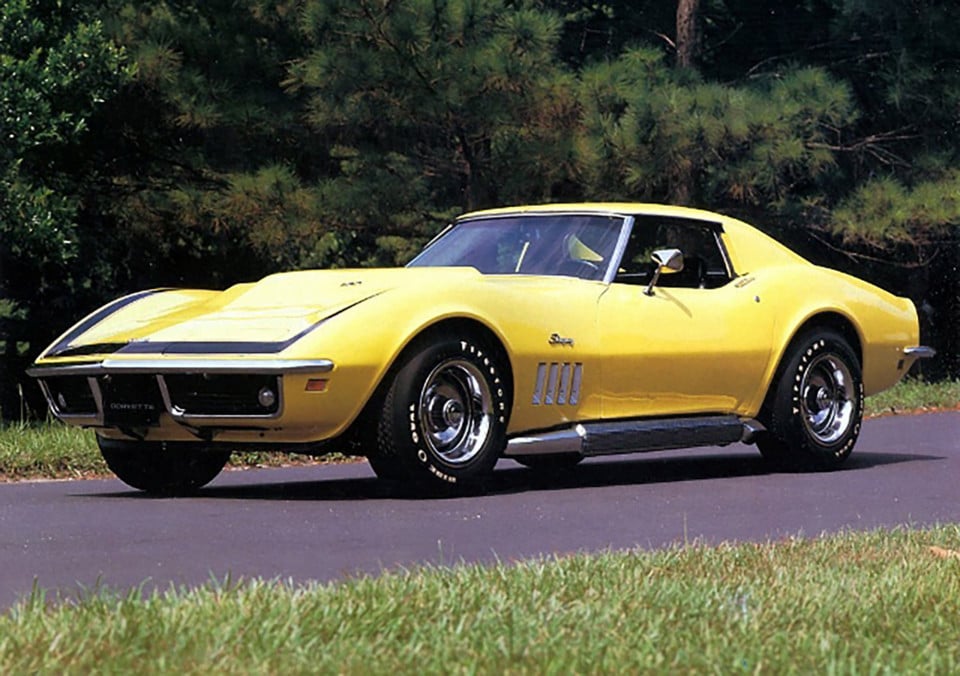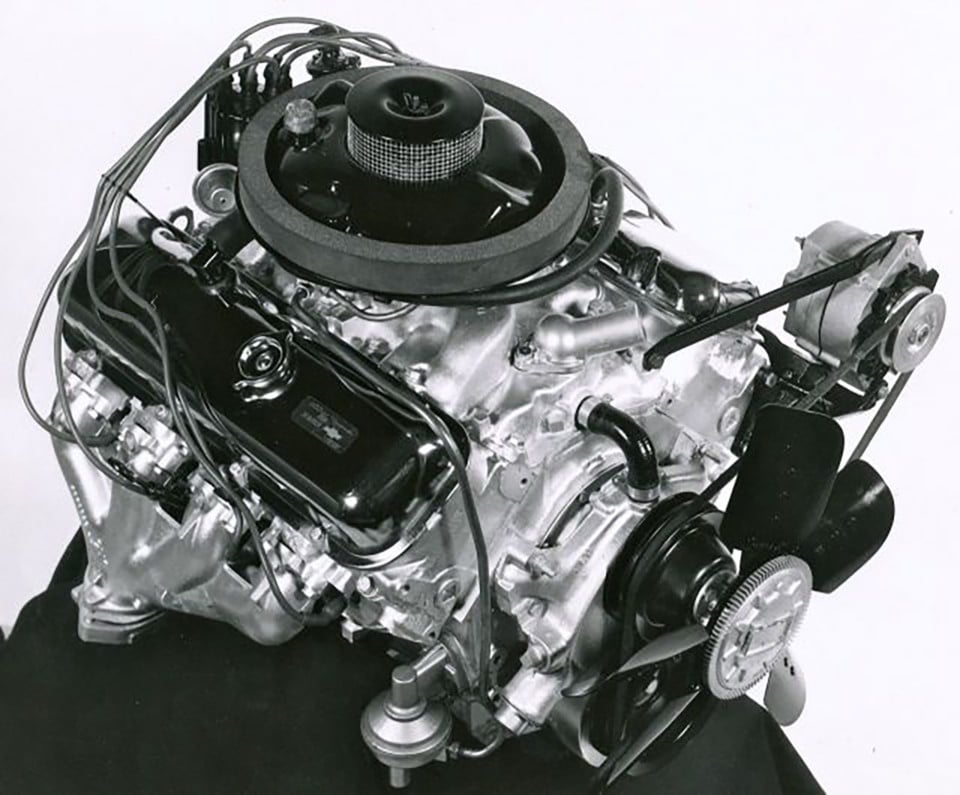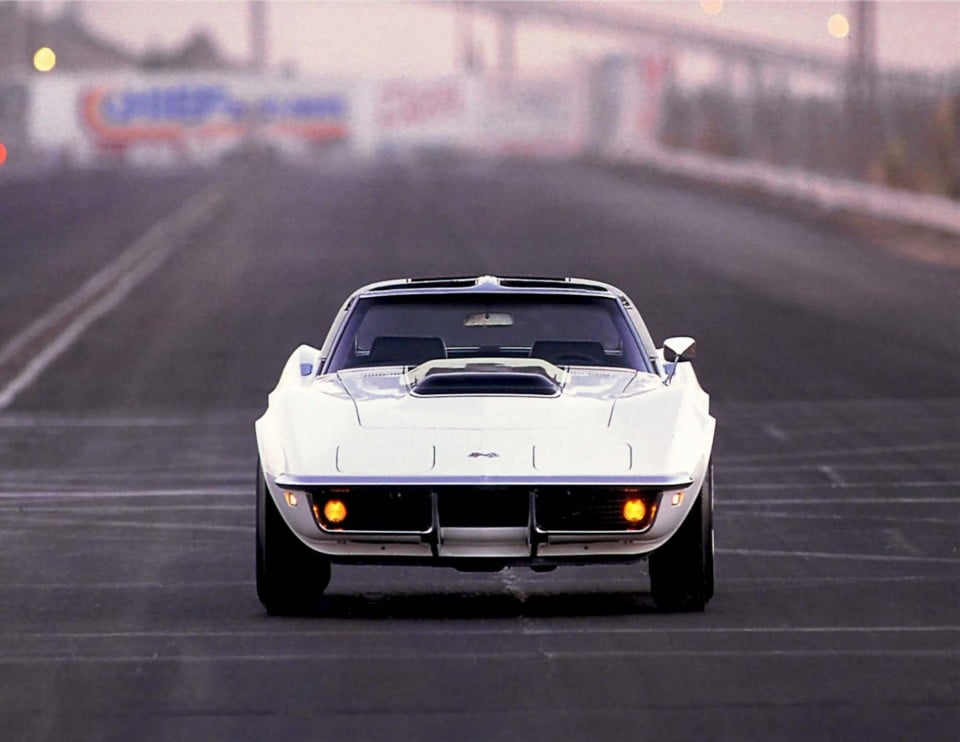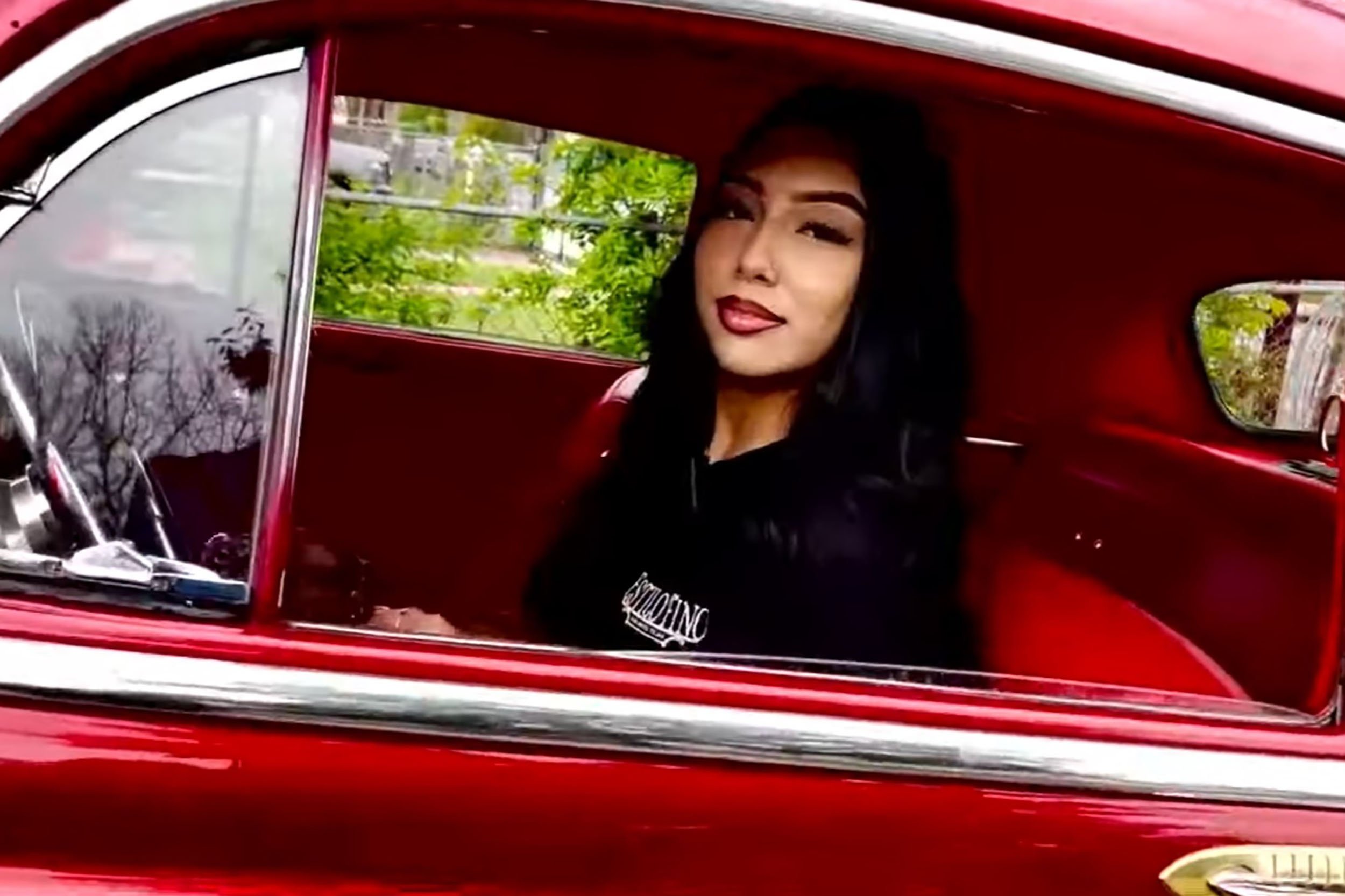Ah, the C3 Corvette… Who doesn’t love it’s iconic shape, it’s positively ludicrous design that exuded sin and perfectly encapsulated the era of freedom and cultural change in which it was produced? I certainly do. I fell in love with a white ’78 uncle Tommy owned and thrilled me in on the streets of Cincinnati. Sadly, his car was stolen from a drug store parking lot one day – something I never got over. But by then, the die was cast and my lust for those cars has endured.
There were many hot iterations of the third-generation Corvette, and some rare ones too. However, none came remotely close in terms of warmth and scarcity as the 1969 Corvette Stingray with the ZL1 package. Possessing the most powerful engine one could have crammed under that sinuous hood, only three, yes three, examples were ever produced. Which is why the 1969 ZL1 is a nearly perfect car to examine in this month’s edition of “Rare Rides!”
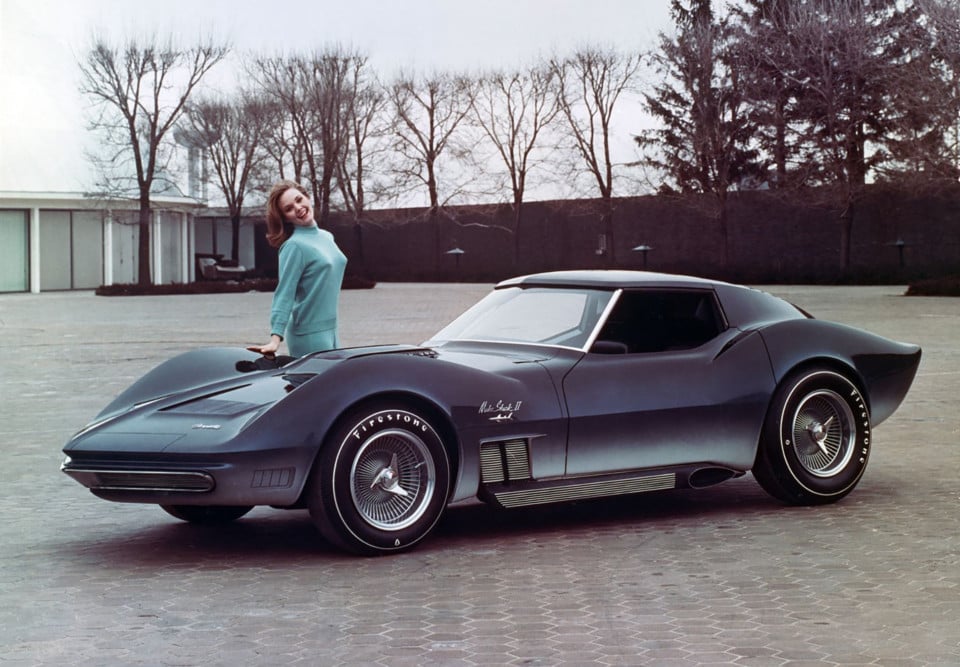
A promotional photo of the non-powered, static display only 1965 Mako Shark II concept car. (Photo courtesy of General Motors.)
In the Spring of 1965, GM designer Larry Shinoda’s earth-shattering 1965 Mako II concept car debuted at the New York Auto Show. The car, of which two examples were made, sported radical, svelte lines. Said to have been inspired by “creatures of the deep,” it featured such external oddities as a blue-fading-to-gray paint scheme, a retractable rear spoiler, a front-hinged clip and hood, and a push-button-activated retracting roof to aid in ingress and egress.
The interior of the car was quite future forward looking as well, with a square-shaped steering wheel, which, along with the pedals, moved rearward to meet the driver who sat in a fixed seat.
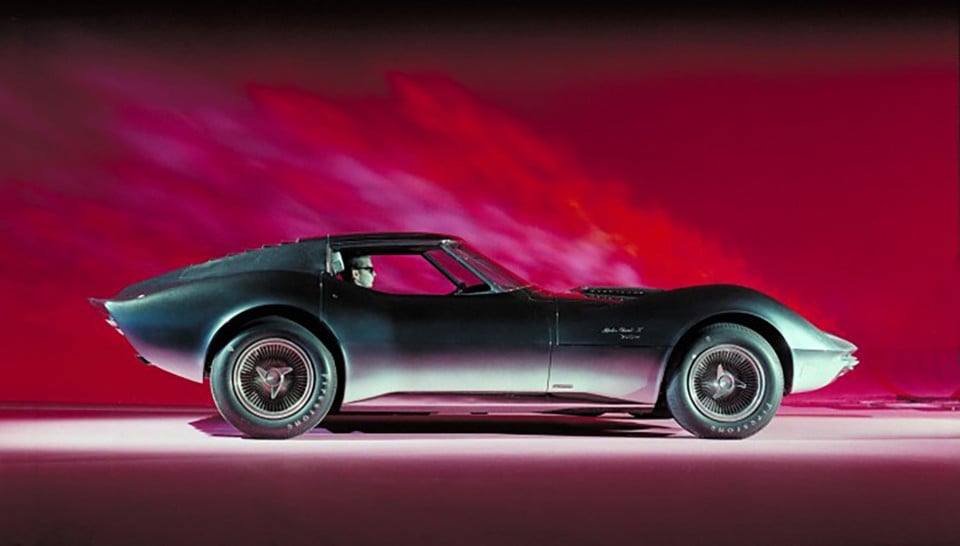
A side view of the 427 c.i. V8-powered Mako Shark II concept at the New York Auto Show. (Photo courtesy of General Motors.)
Only one of the two show cars was powered, and it featured Chevrolet’s brand new 427 cubic inch Mark IV V-8 engine mated to a three-speed Turbo HydraMatic transmission.
All of this combined to make for one hell of a good-looking performance car, indeed one that blew the minds of most who saw it. What those folks didn’t know at the time though, was the Mako Shark II’s outrageous shape and muscular drivetrain would serve as the basis for the next iteration of America’s sports car, the C3 Corvette.
The C3 was originally slated for a 1967 model-year debut. But, Chevy test drivers discovered the car’s pioneering shape – lifted from the Mako Shark II – generated considerable lift at high speed, which resulted in nervous handling. This and a few other niggling issues required rework, which forced Chevrolet to debut the car as a 1968 model instead.
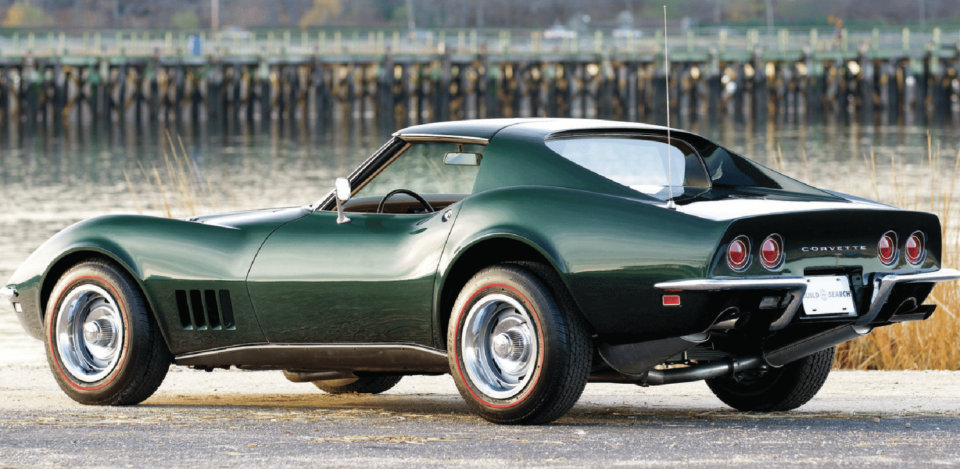
The new-for-1968 Chevrolet Corvette Stingray, a car that astonished, enraptured and seduced. (Photo courtesy of CorvSport.com.)
When finished, the car was a masterpiece of functional sports-car design, available as a notchback coupe or a stunning convertible. The overall shape, though not identical to the show car, nonetheless captured its essence and added some bespoke enhancements such as vacuum-operated pop-up headlamps, functional front fender cooling vents and flush-mounted exterior door handles.
The new car was based on the C2 chassis, and retained its immediate forbearers’ all-wheel, disc-brake system and independent suspension albeit with minor revisions.
The engines available for the new Stingray were legion with an astonishing 21 variants to choose from. They ranged from the 305 cubic inch LG4 V8 all the way up to the monstrous 454 cubic inch LS6 V8. For transmitting power to the rear, buyers could choose from a 3- or 4-speed manual, the 3-speed Turbo HydraMatic from the Mako Shark II, or a 4-speed slushbox.
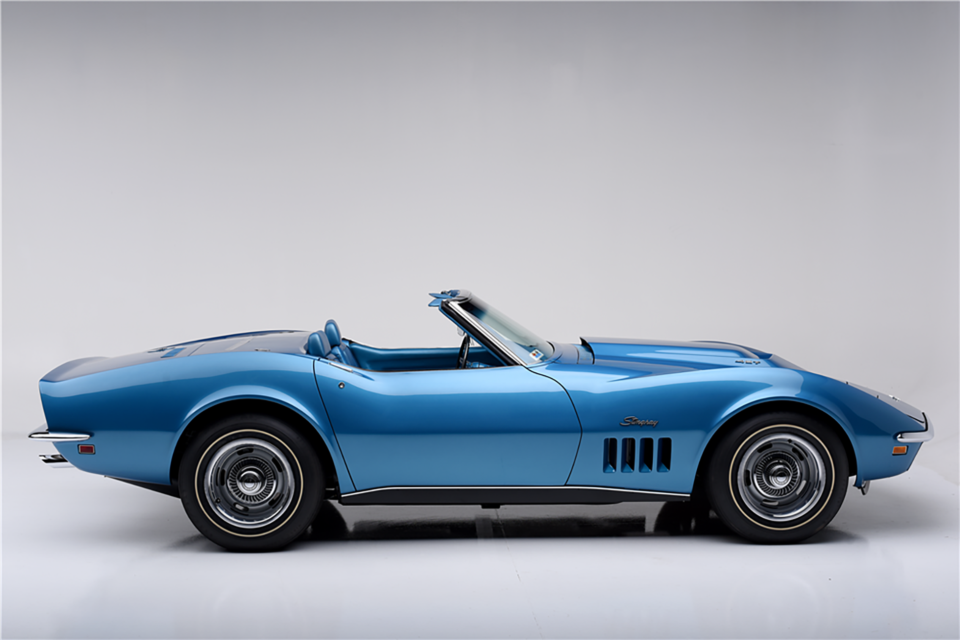
A stunning, concours condition 1969 Corvette Stingray L88 427 convertible. (Photo courtesy of carscoops.com.)
Of all these choices, most hardcore drag or street warriors in 1969 opted for the L88 package. Designed specifically for racing, the L88 offered a cast-iron 427 cubic inch V8 with a sky-high 12.5:1-compression ratio. It came with all the goodies – namely aluminum heads, forged internals, a special induction system, and a breathy 4-barrel Holley carb. Combined, this package was good for a factory-rated 430 brake horsepower, which in reality was much closer to 500.
In addition to the engine, L88 buyers also received a transistorized ignition, F41 special suspension, heavy-duty brakes, the four-speed manual transmission, and a Posi-traction rear, all for the-then princely sum of $1,100.
The folks who drove off the lot in an L88-equipped Corvette likely thought they had the hottest Stingray money could buy and were a good candidate for being king of the streets in their town and their local strip. Little did they know claims to both of these titles were wrong – very, very wrong.
That’s because, in 1969, Chevrolet very quietly offered a little ol’ thing known as the ZL1 package which substituted a special, 356-T6 aluminum version of the L88’s 427 that weighed 100 pounds less than its cast-iron sibling.
On top of the cost of the L88 package, ticking the ZL1 box on the option sheet made the buyer an astonishing $3,010 poorer for a stratospheric grand total sticker price of $10,771. To put it into perspective, 50 years later, the ZL-1 is still (in adjusted dollars) the most expensive engine ever offered by General Motors.
While still factory rated at the same 435 bhp as the L88, and still having an actual output of more than 500 ponies, the 100 pounds of weight shed from the L88 gave ZL1 ‘Vettes a considerable performance advantage. So how fast was it? How about a Firestone Wide Oval E70x15 tire-shredding 11.2-second quarter-mile at 127 mph, as compared to a 12-second, 116-mph pull for a standard L88? Yeah, you read that right, the ZL1 could pull 2019 Challenger Hellcat times in 1969.
So dear was the $10,771 sticker price that dealers rarely even mentioned the ZL1 option to L88 buyers. Those that did found few takers. Three takers, in fact – for the entire model year– making the ZL1 the rarest of the rare.
Of the three cars produced, one was yellow with black stripes, one was ordered in white, and the third (a convertible) wore orange. The orange one was delivered with an automatic transmission while the other two came with the Muncie.
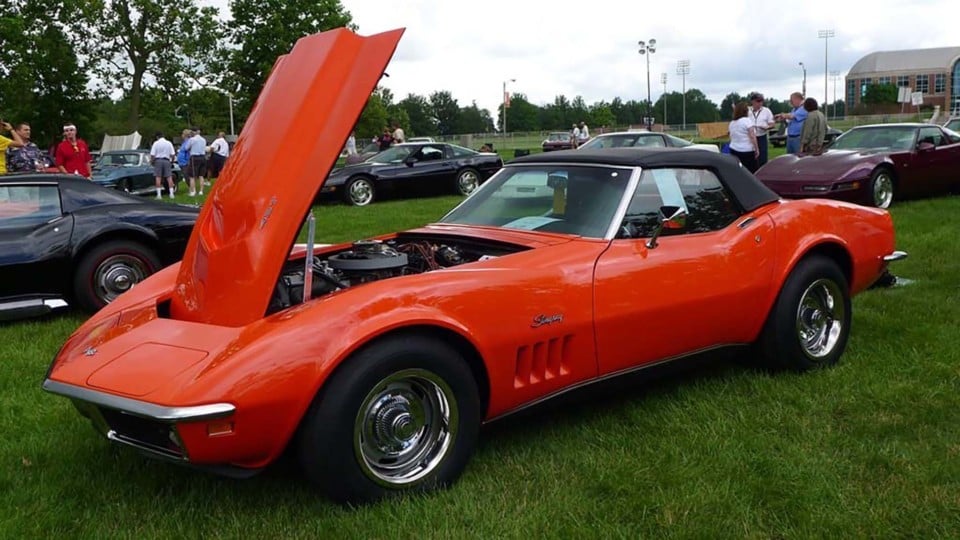
The only 1969 ZL1 Stingray convertible, looking dazzling in Monaco Orange. (Photo courtesy of corvettelegends.com.)
As for price, Hagerty values ZL1 Stingrays at $1,150,000 if a car in concours condition was sold at auction today. My advice is not to hold your breath on seeing this come to pass, as 1969 ZL1 Corvettes are serious “Rare Rides.”

